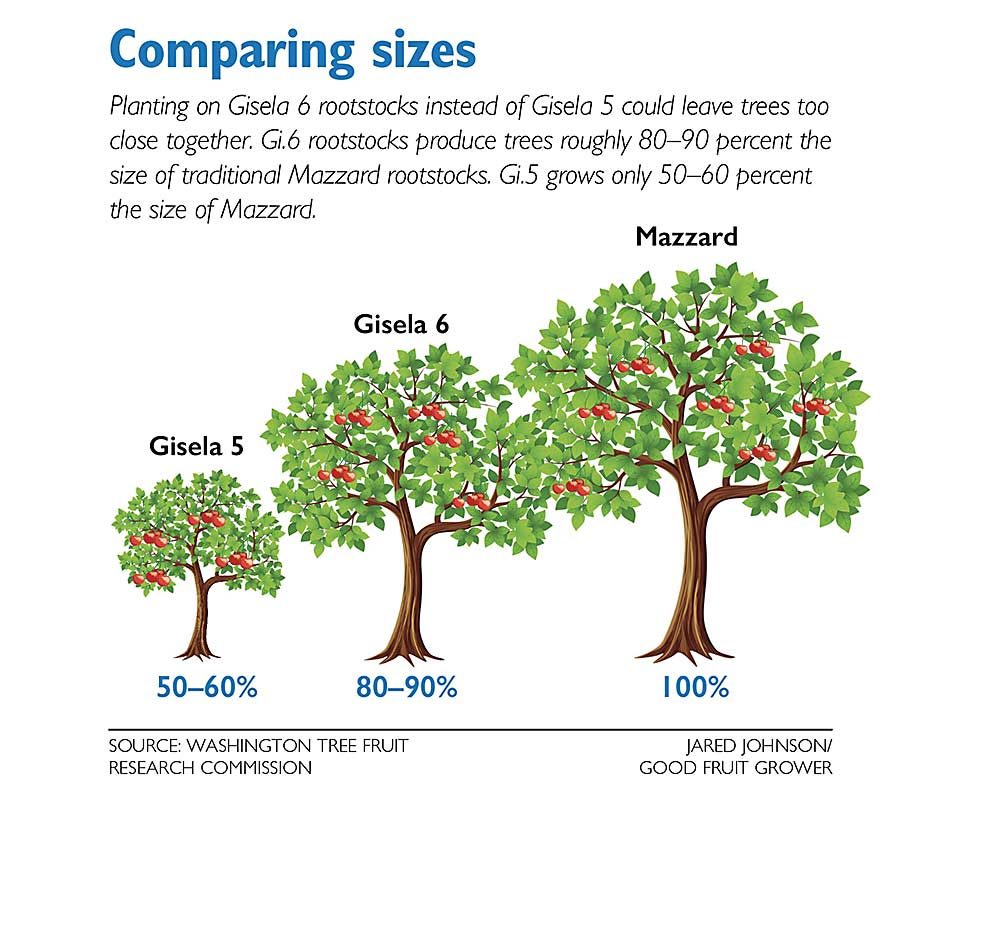Due to a mix-up in the tree supply chain, some growers planted cherries on Gisela 6 rootstocks thinking they were the more-dwarfing Gisela 5. Growers who suspect they have this problem are urged to call their nurseries, which have been running DNA screens in selected locations to help determine the extent of the error.
The difference lies in the vigor: Gi.6 is a semivigorous root that produces trees about 80 percent the size of Mazzard rootstocks, while Gi.5 produces trees about half the size of Mazzard and is suited for pedestrian orchards and high-density plantings.

The impacts don’t appear to be widespread, but what can growers do to mitigate the likely mismatch between planting density and vigor? Good Fruit Grower spoke to three university cherry horticulturists to outline a few possible adjustment strategies.
Matt Whiting, a cherry horticulturist at Washington State University in Prosser, likens the problem to one he more commonly hears — growers in hindsight conclude that they simply planted tighter than they should have.
“The tree spacing question is so challenging,” he said. “It’s so difficult, and you’re locked into it.”
However, the crux of his advice is the same: Somehow diffuse the vigor. One way is through multiple leaders.
“Add more growing points to the tree,” Whiting said.
If there is enough space within the row, growers could redevelop the young trees with two leaders in a V, or with three or four leaders spaced about a foot apart in a steep leader architecture, said Greg Lang of Michigan State University. The lateral branch development on the steep leaders should be narrower on the top than on the bottom for good sunlight interception throughout the tree’s height.
Another option is to shift to a KGB system, a bush style with 15, 20 or more upright growth points commonly used in ladderless orchards, Lang said.
Winter is a good time for such pruning and training. Trees planted in the spring of 2019 are the perfect age, he said. They have already been through the shock of transplant and established healthy roots. They will respond well to cutting the central leader back to between 18 and 24 inches and directing the multiple leaders from there.
“You really would not lose more than a year, probably,” Lang said.
Gi.6 is vigorous, but it can be pruned heavily, said Lynn Long, a semiretired tree fruit extension specialist for Oregon State University. Each year, prune hard to keep trees in their space.
“The nice thing about Gisela 6 is that it will respond nicely to heavy pruning,” Long said.
All three horticulturists suggested growers consider summer postharvest pruning, which reduces vigor, especially at the tops, to allow sunlight to reach the lower branches. Long also advised using reflective ground cover to expose the bottoms to light.
“And then I would suggest pruning back into 2-year-old wood from time to time,” he said. Also, cut into older wood to allow sunlight to reach the center of trees.
Avoid overfertilizing and consider deficit irrigation, they said.
For a more extreme response, and if the trees are only a year old, one could pull up every other one and replant them somewhere else, Whiting said.
In 2015, Lang, Whiting, Long and WSU’s Stefano Musacchi partnered to author a sweet cherry planting system guide that may offer even more advice. To find it, visit https://catalog.extension.oregonstate.edu/pnw667. •
—by Ross Courtney
Related:
—Nurseries recognize rootstocks with mistaken identity
—Training sweet cherries






Leave A Comment